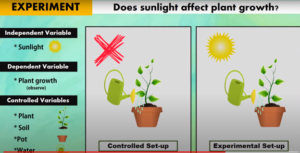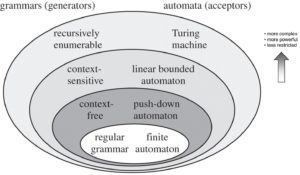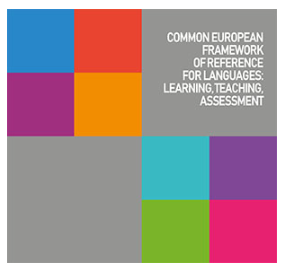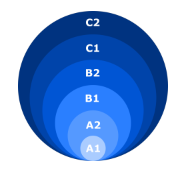11 Strategies for Teaching English Language Learners
- Cultivate relationships
This one is a “no-brainer” no matter what language you speak. As a teacher, getting to know each student helps you understand who they are, where they come from and, perhaps, gain some insight into what teaching and learning styles are most effective for them.
For the students, knowing that your teacher cares enough to make the effort to get to know you as a person can have a motivating effect. It contributes to an atmosphere in which each student feels known and appreciated, and is therefore more likely to fully open themselves to the learning process rather than succumb to feelings of reticence or shyness that can often accompany a lack of language skills.
- Be culturally aware
Since many English language learners come from outside the U.S., part of creating the ideal learning atmosphere may include cultivating an appreciation of diversity. Developing an awareness of each student’s background, religious and cultural practices may also provide insights that affect how you interact with a particular student (for example, if they come from a cultural tradition where eye contact with adults is viewed as disrespectful).
At a very basic level, engaging in discussions about the different cultural backgrounds of students helps everyone get to know each other and reinforces the idea that different cultures include many similarities and differences — an important concept when some students are in the process of acquiring a new culture and language. Some educational advocates also suggest home visits as an effective “extracurricular” way for educators to invest in building rapport.
- Teach language skills across all curriculum topics
In many cases, your English language learners may also be receiving specific English as a Second Language instruction from an ESL specialist. However, it is helpful for teachers of all curriculum topics in mainstream classrooms to understand and embrace the role of language teacher as well.
- Speak slowly and be patient
You have a lot of material to cover, but there is no need to rush. In fact, teachers of ELLs are encouraged to consciously slow things down. This can mean:
Speaking in a slower, measured cadence
Being a bit more aware of your enunciation
Allowing extra time (an additional 3 to 5+ seconds) for students to respond
The extra seconds give all students a little extra time to think and formulate a response. “Researchers have found that typically most teachers give 1 to 2 seconds between asking a question and expecting a student response,” Larry Ferlazzo, a teacher, education blogger and co-author of “The ESL/ELL Teacher’s Survival Guide,” told Edutopia. “The same researchers have shown that if you wait 3 to 5 seconds, the quality of responses is astronomically greater.”
- Prioritize “productive language”
Speaking and writing are sometimes characterized as “productive language” because they both literally require students to “produce” language output, in contrast with reading and listening, which are described as “receptive” skills.
Teachers who are not language specialists may not be aware that English language learners are likely to develop those receptive skills first. It is important to emphasize the fact that evidence that students are reading, listening or understanding does not necessarily equate to progress in expressing themselves through fluency in speaking or writing.
- Use a variety of methods to engage learning
The idea here is to provide students with multiple options for taking in information, processing and making sense of ideas, and sharing what they are learning. This is often referred to as “differentiated instruction” — an educational practice that involves recognizing that “students each have their own unique gifts and challenges; interests, aptitudes and learning styles” and tailoring instruction to meet students’ individual needs.
“All kids learn better when they engage with material in multiple ways: Lessons that involve writing, speaking, drawing and listening, for example, give students four opportunities to deepen their understanding of the work. For ELLs, those additional engagements also provide a little breathing room so they can work through the language barrier.”
- Utilize visual aids
The strategy of using visual aids also connects to the idea of differentiated instruction, which is considered central to teaching English language learners. In this case, it is understood that some students are “visual learners” whose ability to digest and process new concepts and material is enhanced by the use of pictures, diagrams, charts and other visual tools.
The belief is that combining “nonlinguistic representation” along with the linguistic component of each lesson benefits all students and not just English language learners — the operative strategy here is to “show” as well as “tell.” In addition to pictures, diagrams, etc., teachers are encouraged to write everything on the board so students can see as well as hear the information.
- Coordinate with the ESL teacher
Since ELLs are often receiving specific English as a Second Language instruction from an ESL specialist, it can be very helpful to check in with their ESL instructors. Doing so can help the educators involved develop a fuller understanding of how regular classroom work can support ESL instruction, and vice versa.
Such discussions can yield insights into individual students and their learning styles or challenges; they can also be helpful for sharing information about curriculum topics, potentially providing ESL teachers with ideas for highly relevant vocabulary words that can reinforce academic lessons.
- Pre-teach new vocabulary words
When you have a challenging reading assignment coming up, some experts encourage you to preview or “pre-teach” new vocabulary words that may be unfamiliar to ELLs, or even to give them a copy of the article or link to the material ahead of time.
- Build in some group work
Instructor-led, whole-class activities may make up most of your class period but it can also be very helpful to build in time for group work as well. This is because it affords additional opportunities for ELLs to practice their language skills with peers in a less formal, lower-risk setting.
- Respect moments of silence
Many new language learners tend to be a little reticent and quiet, opting for silence over speaking up and saying something “wrong” in a language that is still unfamiliar. Therefore, teachers are encouraged to be mindful of this and not be too aggressive in forcing students to open up at the outset. Ongoing support and patience is preferable to pressure, since such initial silence is considered to be a normal stage in learning a second language.



